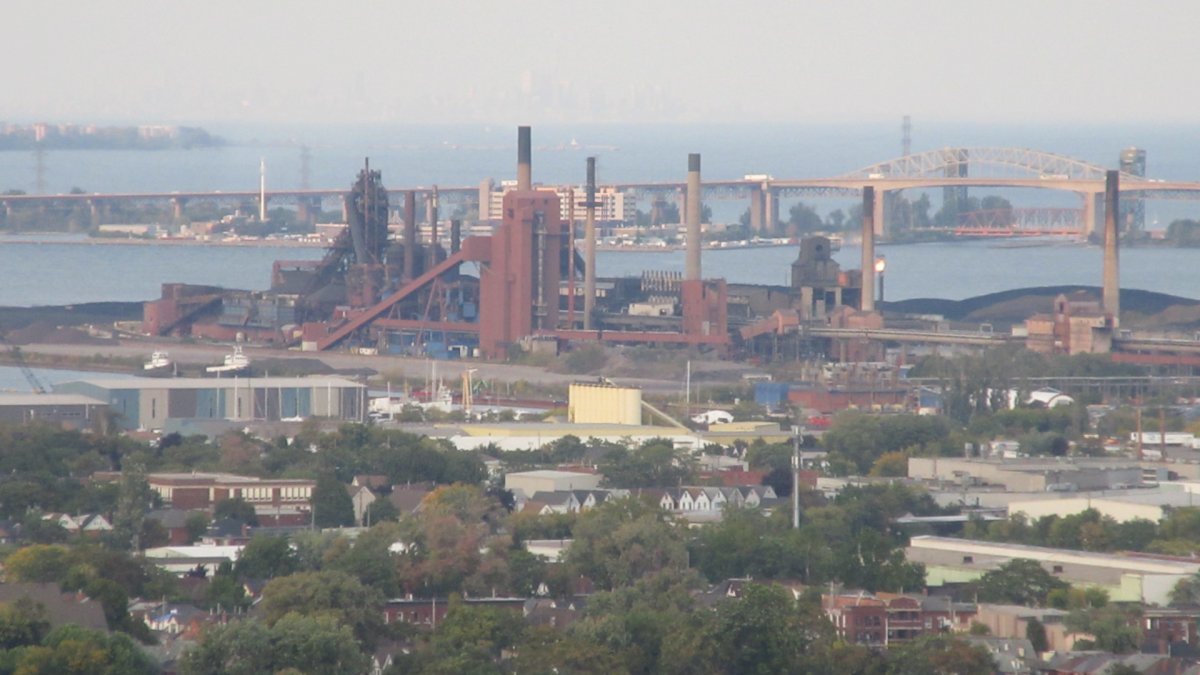A Hamilton group monitoring the city’s air quality says pollution levels rose in 2021 but remain near historic lows recorded early in the COVID-19 pandemic.

Clean Air Hamilton revealed the agency’s latest report to city councillors this week, with levels of benzene, nitrogen dioxide and other particulate matter high on their study’s list of priorities.
The report revealed that inhalable particulate matter, usually represented by mould, dust, smoke and bacteria, did increase year over year but remained at acceptable annual objective (AO) targets set by Ontario’s Ministry of the Environment, Conservation and Parks (MECP).
Respirable particulate matter, usually vehicle exhaust, wildfire particulates and industrial plant emissions, was also up year over year on the Mountain and in the downtown, but declined on the city’s west side.
- Enter at your own risk: New home security camera aims paintballs at intruders
- High benzene levels detected near Ontario First Nation for weeks, residents report sickness
- Beijing orders Apple to pull WhatsApp, Threads from its China app store
- Boston Dynamics unveils ‘creepy’ new fully electric humanoid robot
Ozone, which is more commonly referred to as “smog,” was also up across the city but remained lower than levels recorded throughout 2018. The city’s 30-year ozone trend is comparable to the lowest concentrations endured in other Ontario jurisdictions.
Clean Air chair Bruce Newbold told councillors that much of the pollution is not generated locally but created by transboundary sources – sources outside of Hamilton.
“It’s coming from outside of the city — maybe the Ohio Valley, for example — and then passing through the city in the same way that some of the pollution that we produce here ends up impacting further east and downwind from us,” Newbold explained.
Transboundary sources contribute to approximately 90 per cent of respirable particulate matter, 70 per cent of benzene, and 29 per cent of BaP concentrations in Hamilton.
However, Newbold said local industrial and on-road and off-road transportation emissions still make negative contributions to localized air pollution and downwind airsheds.
The movements were of concern for Ward 9 Coun. Brad Clark, who suggested emissions travelling from region to region could have potential culprits pointing fingers elsewhere for the city’s bad air.
“It almost lets the local community off the hook,” Clark said.
“It’s not us. It’s someone else down south, and we’re not testing to see what’s coming in at that border.”
Newbold did admit the city’s testing equipment is not located at the borders of the city, but said meteorological data is one tool they use to understand where particulate matter is coming from.
The Clean Air report is advocating continued monitoring and collaboration from organizations, industries, the city and other levels of government to reach AO goals.
He says industry is going to be the primary source for benzene and BaP, and that will be “difficult to avoid.”
These chemicals that are pollutants within our atmosphere on a day to day basis,” said Newbold.
“In terms of avoiding them, there’s relatively little we can do but make people aware of these concerns that we have in terms of our air quality and continue to work with the partners that we have at the table.”
Newbold also suggested encouraging Hamiltonians to reduce their transportation emissions and further progression of local transit initiatives will be a huge part of clearing up the city’s air quality.
“Electrification of the city fleets, for example, removing internal combustion engines from city vehicles, there’s a great place to start,” Newbold said.
“Our LRT, it should have a huge impact in terms of air quality through the downtown core once that is up and running.”










Comments